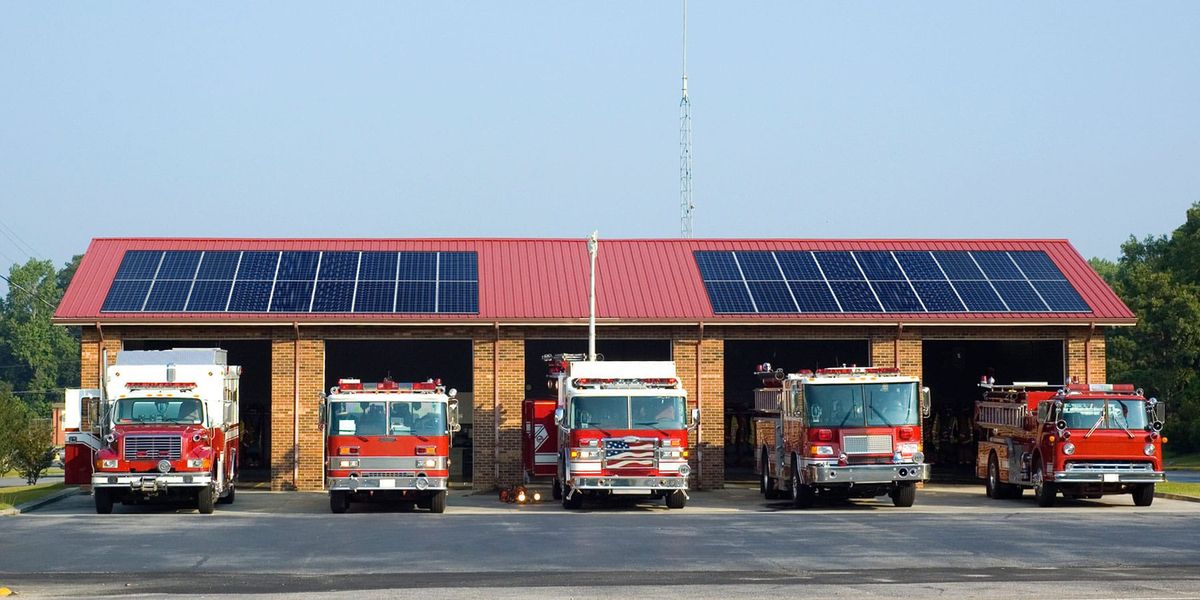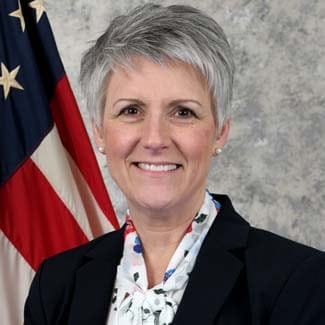
Sustainable Energy and Conservation Solutions for Fire Departments
The U.S. Fire Administration Wants to Set an Example.
Posted: March 8, 2023
The USFA is responsible for the NETC, a nationally recognized historical location in Emmitsburg, Maryland, with 30 structures that function as sleeping, eating, education and office spaces. We are committed to climate change initiatives to reduce our carbon footprint and lower monthly operating costs at the NETC. Many of these initiatives can also be implemented at fire stations and other fire department facilities across the country.
By adopting climate change initiatives locally, fire departments can demonstrate energy and environmental leadership in their communities to raise public awareness of the adverse effects of climate change and the benefits of energy efficiency.Proactive steps for fire department leaders
Light-emitting diode lighting conversion
Light-emitting diode (LED) lighting is an energy-efficient alternative to traditional fluorescent and incandescent lighting. LED lights use less energy and last longer than traditional lighting, making them a cost-effective solution for fire stations and other facilities. By converting to LED lighting, fire departments can reduce their energy consumption and lower their electricity bills. In addition, LED lighting produces less heat than traditional lighting, which can help reduce the load on air conditioning systems and lower cooling costs.
Improving building insulation
Improving building insulation is another way fire departments can reduce their carbon footprint. In addition to proper insulation, maintaining a tight window envelope, which involves sealing all gaps and cracks around windows and doors, can help reduce air leakage and prevent heat loss in the winter and heat gain in the summer. This can help fire departments improve their energy efficiency by saving on heating and cooling costs. In addition, proper insulation can help regulate temperature and humidity levels, which can help protect equipment and extend its lifespan.
Improving heating and air conditioning efficiency
Improving heating and air conditioning efficiency is another way a fire departments can reduce their energy consumption and carbon footprint. By upgrading to high-efficiency heating, ventilating and air conditioning (HVAC) systems, fire departments can improve their indoor air quality and reduce their energy consumption. HVAC systems should undergo regular maintenance to help ensure that they are running at peak efficiency and reduce the risk of breakdowns or malfunctions during emergencies.
Solar energy use
Solar energy is a renewable and clean energy source that fire departments can use to reduce their reliance on fossil fuels. By installing solar panels, fire departments can generate their own electricity and target "net-zero" energy use. This means that the fire department’s facility generates as much energy as it consumes, resulting in a zero net energy balance. In addition, solar panels can help reduce electricity bills and provide backup power in the event of a power outage.
Electric vehicle use
Electric vehicles (EVs) are becoming increasingly popular as a clean and sustainable alternative to traditional gasoline-powered vehicles. Fire departments can adopt EVs for purposes such as command vehicles and fire apparatus, which can help reduce the department’s carbon footprint and operating costs. Fire departments can also use EVs as a mobile power source during emergencies, as EVs have the capacity to store and distribute large amounts of energy.
The nation’s fire service is an important role model in providing healthy and safe communities that are essential for resiliency and sustainability. Our citizens look to their role models to be part of ensuring a resilient and sustainable community for generations to come. We can do so much to help reduce our carbon footprint… change lighting, use renewable energy such as solar, engage in discussions concerning community development, and educate our workforce on climate change and its impacts on our profession – today and in the future, and on our community. Join the USFA and help reduce our collective carbon footprint.
Sustainability funding opportunities
For information about grants and other opportunities to fund your fire department’s sustainability projects, contact your local government’s planning or sustainability office. Other possible funding sources include:
- Assistance to Firefighters Grant Program
- U.S. Environmental Protection Agency
- Opportunities listed at Climate.gov
The bottom line
Climate change initiatives, including LED lighting conversion, improving building insulation, improving heating and air conditioning efficiency, solar energy use, and EV use can help fire departments reduce their carbon footprint, improve their energy efficiency, save on operating costs and contribute to a more sustainable future.
For more information on how the USFA increased energy efficiency and reduced carbon emissions at the NETC, contact our facility manager, Val Benson. For information on what the federal government is doing to advance sustainability and climate-resilient operations, visit Sustainability.gov.

